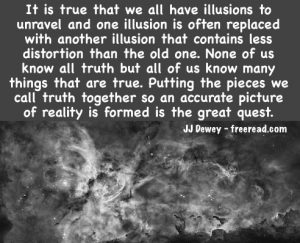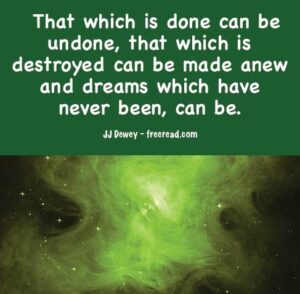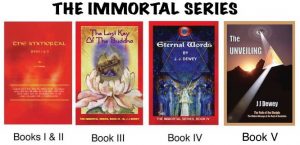
Aug 19, 2016
The Real Jesus
Stephane gave a very good rundown giving a great overview, though some of the details are in dispute about the possibility of Jesus being patterned after a previous Jewish teacher such as Yeishu ben Pandeira. The problem is that there is no way to positively prove by historical research any of the theories about Jesus, among which are:
(1) He was a real historical person as presented in the Gospels.
(2) He was a historical person, but greatly embellished by the gospels.
(3) He was a historical person, but inspired by a different person in history than Jesus of the Gospels. Among these are Yeishu ben Pandeira as well as Apollonius.
(4) He was a completely fictional character created to control the masses.
(5) The life of Christ was a fictional allegory written by mystics to use as a teaching vehicle.
Stephane made about as good of a case as possible for the real Jesus being Yeishu ben Pandeira. Perhaps the strongest point for the Theosophically inclined is that HPB indicated that Jesus of the gospels was patterned after Yeishu ben Pandeira.
I tend to not accept a truth merely because she said it. I do give a lot of weight to her words as I believe she had higher contacts as well as being extremely intelligent. Among all those who have come in contact with the masters she had the sharpest mind in my opinion.
Even so, I think her words were far from infallible and few of them represented actual words from masters. I think she did receive a lot of inspiration and some detailed facts, but wrote them all down in her own language, using her own intelligence. Thus I read all she writes in the light of the soul.
On the other hand, Alice A. Bailey, though intelligent, was not as savvy as HPB, but did write the words of the Master DK pretty much word for word as given to her. In fact, I think the greatest proof that she had higher contact is to read a book written by her and then one by DK. The difference is profound.
So do I accept DK’s words without question then?
No. I do not accept anything without running it by my mind and Higher Self. However, DK is an earned authority with me and I give his words, perhaps more weight than any other author. If I come across something that does not seem logical I will then study them from every angle trying to see if I missed something or perhaps there is meaning beyond the obvious.
Thus when HPB suggests that the person of Jesus was inspired by Yeishu ben Pandeira I do not automatically accept it though I do give it weight and study out the possibility. When DK says that the Master Jesus was also Apollonius of Tyanna the red flag of a possible error goes up, but I still give the statement a lot of weight because I have proven to myself other things he said that seemed strange or unbelievable in the past. I therefore look at and consider all possibilities that could conform to the idea that Jesus was Apollonius.
Being able to give weight to a teacher’s words is important because if that teacher is truly inspired then you also can be inspired by his words.
That said I see number of problems with the idea that Yeishu ben Pandeira was the person that some writer used as a pattern from which to create the life of the Jesus of the gospels. Let us look at the pros and cons of the idea.
Pros:
(1) They were both said to be miracle workers.
(2) Another name for Yeishu (or Yeshu or Yesu) ben Pandeira was Yeishu ha-Notzri. “Some have translated this as Jesus the Nazarine.”
(3) Yeishu had five disciples. Two of them, Mattai and Todah, had names similar to the disciples of Jesus being the Hebrew forms of Matthew and Thaddaeus.
(4) They both upset the Jewish authorities and were put to death on the eve of the Passover.
(5) Early Christians were called Nazarenes, a term in use before the Common Era.
Cons
(1) We have very sketchy information on Yeishu ben Pandeira. We know little of his teachings or life.
(2) Yeishu ben Pandeira had five disciples, not twelve, and three of them, Nekai, Netzer and Buni had names one could not associate with the Twelve Apostles.
(3) The Hebrew name for Jesus is generally agreed to be Yeshua, not Yeishu, or Yeshu. Yeshua is of course translated into the English Joshua. It is believed that the Greek word for Jesus, Iesous, was back translated to come up with Yeishu instead of Yeshua. If this is the case then Yeishu ha-Notzri is not the equivalent of Jesus the Nazarine.
(4) If Jesus was patterned after the life of Yeishu ben Pandeira then where did all his teachings and parables come from as well as the story of his ministry? There is little in the life of Yeishu ben Pandeira that could be used for the script of the Gospels.
(5) The main claim to fame for Jesus was the resurrection story. Without this, he would have been lost to history. If the life of Jesus was inspired by Yeishu ben Pandeira then why was there no resurrection story about him also?
This would be like creating a character patterned after George Washington, but making him come back from the dead, something the Washington story does not have in it.
(6) There is quite a bit of evidence that Jesus lived in the beginning of the first century. One of the strongest from non Christian sources is verification from Josephus and Hegesippus that James, the brother of Jesus was a historical person, who was stoned to death in 62 AD. If the brother of Jesus (who is mentioned in the Bible) lived in the first century then Jesus would have lived then also.
For final verification let us look at the actual words of a master (DK) and see what verification we can get about the life of Jesus.
It is true that sometimes DK spoke of obvious symbolism in the life of Jesus, but there can be symbolism behind actual physical events. For instance DK speaks of the baptism as a real event.
“We have an instance of this in the manner the Christ used the body of the initiate Jesus, taking possession of it at the time of the Baptism.”
TCF, Pg 1150
Then he also talks about the symbolism behind baptism.
Here are some other real events indicated by DK in the life of Jesus.
“Behind these words of illusion, glamour and maya, lies TRUTH. This truth is the clear consciousness of Being, of Existence and of essential, initial Reality. That is the reason that Christ stood mute before Pilate who symbolised the human intellect; He knew that no reply could convey meaning to that veiled, inhibited mind.”
Glamour, Pg 240
Also:
“I would remind you that the outstanding characteristic of Jesus of Nazareth, throughout the period prior to the crucifixion, was one of complete silence;”
Rays and Initiations, Page 220
Here DK speaks of Jesus before Pilate as if it were a historical fact. Pilate was a true historical person who was the fifth prefect of the Roman province of Judaea from AD 26–36, right around the time given the Gospels for the crucifixion.
Then there are numerous other references where DK indicates that Jesus was crucified as related in the gospels rather than stoned to death and then hung on a tree.
“The exclamation of the Christ, “Father, not my will, but Thine be done,” indicated His monadic and realised “destiny.” The meaning of these words is not as is so oft stated by Christian theologians and thinkers, a statement of acceptance of pain and of an unpleasant future. It is an exclamation evoked by the realisation of monadic awareness and the focussing of the life aspect within the Whole. The soul, in this statement, is renounced, and the monad, as a point of centralisation, is definitely and finally recognised. Students would do well to bear in mind that the Christ never underwent the Crucifixion subsequent to this episode, but that it was the Master Jesus Who was crucified. The Crucifixion lay behind Him in the experience of the Christ. The episode of renunciation was a high point in the life of the World Saviour, but was no part of the experience of the Master Jesus.
Rays and Initiations, Pages 314-315
Here DK acknowledges the Gospel account of the experience in the Garden of Gethsemane as being a real occurrence as well as the crucifixion. It doesn’t sound like he is just speaking in symbols.
Then there is this:
“It is interesting here to note that the Master Jesus, as He hung upon the Cross, experienced (on a much higher turn of the spiral than is possible to the disciple) the acme and the height of this crisis, though in “His case – being attuned to God and to all God’s children – there swept over Him the sum total of the dilemma of the world disciples and all the agony of the astral awareness of this dilemma, voicing itself in the agonising words: “’My God, My God, why hast Thou forsaken Me.’”
Esoteric Psychology, Page 374
“The Master Jesus on the Cross could not respond to any saving process (even had He desired to do so) because the soul body – as is always the case at the fourth initiation – was destroyed; there was nothing to respond to the evocative power of an outside person, interested or loving. As an adept and as one in whom monadic consciousness was firmly established, the powers then available to Jesus could not be used in the saving of His physical body.”
Esoteric Healing, Page 654
“It was the Master Jesus who ‘died’ and entered into the tomb, thus climaxing His long series of incarnations and ending – by destruction – the hold of matter on the spirit;”
Rays and Initiations, Page 355
Here we have verification of the gospel account of his words on the cross as well as his crucifixion.
In addition, DK seems to subscribe to the fact that there was a literal resurrection of Jesus from the dead, something not identified with any other Jewish figure before him.
“This return to an original state is pictured for us in The New Testament under the story of the Prodigal Son, who said “I will arise and go to my Father,” and by the story of the resurrection in which the Master Jesus arose out of the tomb; the chains of death could not hold Him. At that time of His “rising,” a far more important event took place and the Christ passed through the seventh Initiation of Resurrection and returned back to His original state of Being…”
Rays and Initiations, Pg 730
The fact of the resurrection will be demonstrated during the next few centuries, and the Living Christ will walk among men and lead them onward towards the Mount of Ascension.
The Externalization of the Hierarchy, Pg 471
Finally, the parting words to the disciples are verified
“The final words of the Christ to His apostles, gathered together in the upper chamber (in the Hierarchy, symbolically) were, ‘Lo, I am with you all the days, even unto the end of the age,’ or cycle.”
The Reappearance of the Christ, Page 29
There is some symbology in everything, but overall it does indeed sound like DK subscribes to the basic elements and timeframe of the life of Jesus as being largely historically accurate.
In addition it would add depth to the mystery if Jesus was a reincarnation of Yeishu ben Pandeira – which thing is a real possibility.
For the Previous Article on this subject GO HERE
Copyright 2016 by J J Dewey
Index for Recent Posts
Easy Access to All the Writings
Register at Freeread Here
Log on to Freeread Here
For Free Book go HERE and other books HERE
JJ’s Amazon page HERE
Gather with JJ on Facebook HERE





 7/4/99
7/4/99